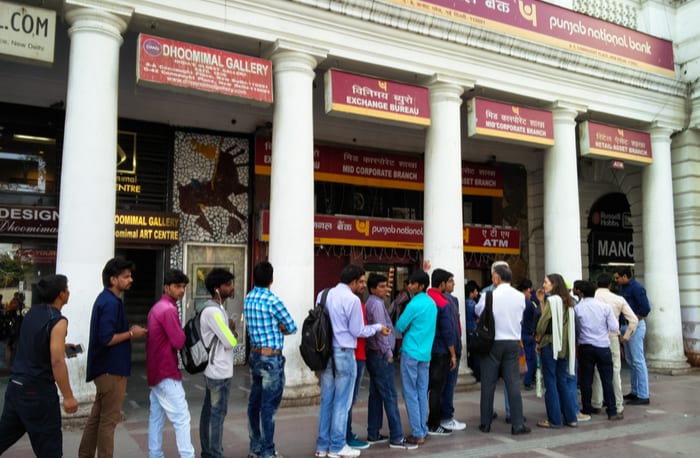India Seizes Control Of Yes Bank, Plans Bailout

The Indian government has seized control of its fourth-largest private bank as it organizes a bailout plan and temporarily limits how much depositors can withdraw, according to reports on Friday (March 6).
The Reserve Bank of India (RBI) said that “it had no alternative” but to step in with a rescue plan for Yes Bank and replace the lender’s entire board.
The country’s biggest lender, The State Bank of India, will head a consortium to pump new capital into Yes Bank, which had been struggling to offset a surge in bad loans, Bloomberg reported, citing sources familiar with the matter.
The RBI has capped the withdrawal limit at Rs 50,000 ($676) for 30 days, sending people into a panic and emptying Yes Bank’s ATMs of cash. The restriction by the government also stays the “commencement or continuance of all actions and proceedings” against the bank.
“There is no need to panic,” the central bank said in a statement. “The Reserve Bank assures the depositors of the bank that their interest will be fully protected.”
For the next 30 days, Yes Bank will be led by the RBI-appointed Prashant Kumar, an ex-chief financial officer of SBI.
“Yes Bank is currently in the intensive care unit, and a State Bank capital injection will provide much-needed oxygen,” said Kranthi Bathini, a director at WealthMills Securities Ltd.
Analysts are concerned the crisis could lead to strains in India’s broader financial system.
“It will be done very swiftly, it will be done very fast,” RBI governor Shaktikanta Das told the Times of India regarding the rescue plan. “Let me assure you, the Indian banking sector continues to be sound and safe.”
Yes Bank was founded in 2004 by billionaire Rana Kapoor who was recently asked to step down as the CEO of the bank by the RBI. He was replaced by Deutsche Bank executive Ravneet Gill.